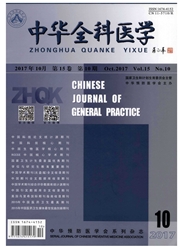

 中文摘要:
中文摘要:
目的探讨孕妇B族溶血性链球菌带茵状况以及母婴预后的关系。方法自2010年1月-2011年7月调查了在珠海市妇幼保健院定期产检的1580例孕妇,于孕12周后在阴道下段及肛周取样,种植于改良爱德华培养基中,再转种血琼脂平板培养。其中筛查出GBS阳性者109例作为研究组,选择同期GBS阴性者200例作为对照组。并随访孕妇流产、早产、胎膜早破、产褥感染、剖宫产率、胎儿窘迫、新生儿窒息、新生儿感染等情况。结果珠海地区孕妇妊娠中晚期GBS带茵率为6.9%。研究组的孕妇流产率、早产率、胎膜早破率、产褥感染率、新生儿肺炎、新生儿上呼吸道感染率均显著高于对照组。两组剖宫产率、胎儿窘迫率、新生儿窒息率差异无统计学意义。结论妊娠中晚期孕妇感染B族溶血性链球菌可对妊娠结局造成不良影响。
 英文摘要:
英文摘要:
Objective To study the relationship between maternal group B Streptococcus carriers and maternalneonatal out comes. Methods 1580 cases of pregnant women taking regular prenatal care from January 2010 to July 2011 in our hospital were investigated. After the 12 weeks of pregnancy, samples were taken from the lower vagina and crissum, cultivated in the modified Edward medium ,and then cultured in the blood agar plate. 109 positive GBS screening cases were used as study group,200 and negative GBS cases were selected the same period of as control group. Keeping followup and recording the abortion, premature, premature rupture of membranes, puerperal infection, cesarean section, fetal distress, neonatal asphyxia, neonatal infection and oth er conditions. Results Carrier rate of pregnant women in Zhuhai area in late pregnancy GBS was 6.9%. The miscm'riage rate, the rate of preterm birth, premature rupture of membranes, rate of puerperal infection rate, pneumonia of newborn, neonatal upper respiratory tract infection rates in study group were higher than that in the control group. Cesarean section, fetal distress rate and rate of neonatal asphyxia had no statistically significant difference between the two groups. Conclusion The infection with group B Streptococcus in late pregnancy Preanant women can lead to the adverse effectson pregnancy outcome.
 同期刊论文项目
同期刊论文项目
 同项目期刊论文
同项目期刊论文
 期刊信息
期刊信息
